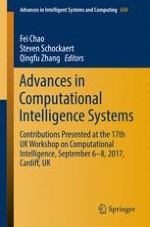The book is a timely report on advanced methods and applications of computational intelligence systems. It covers a long list of interconnected research areas, such as fuzzy systems, neural networks, evolutionary computation, evolving systems and machine learning. The individual chapters are based on peer-reviewed contributions presented at the 17th Annual UK Workshop on Computational Intelligence, held on September 6-8, 2017, in Cardiff, UK. The book puts a special emphasis on novels methods and reports on their use in a wide range of applications areas, thus providing both academics and professionals with a comprehensive and timely overview of new trends in computational intelligence.
